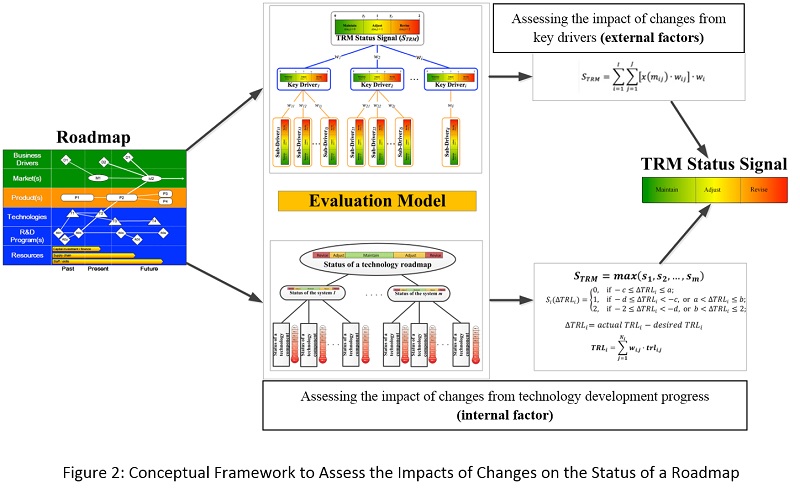It is important that an organization should have a defined managerial procedure for monitoring the status of a roadmap.
The mechanisms for data collection and analysis should also be defined to track changes and evaluate the impacts of changes from both external and internal factors. Once the impacts from the changes have gone beyond the acceptable level for the organization, then an amendment to the roadmap should be considered.
Five key steps
In this study, a five step managerial procedure is proposed as shown in Figure 1.

Step 1 Apply the roadmap.
All those involved can refer to the roadmap and use it to provide checkpoints at each key milestone. Some teams will also manage their operations with a plan and timeline initially created from the roadmap. Thus, the plan can be identified on the roadmap and clearly communicated to all stakeholders. This helps to ensure the achievement of the strategic targets within a specified timeline identified on a roadmap.
Step 2 Monitor changes from both internal and external factors.
The components of external factors can be considered from a social, technology, economic, environmental, policy perspective, whereas internal factors are considered from the progress of technology development.
Step 3 Assess impacts of changes on the roadmap.
As changes from the external and/or internal factors are notified, the identified changes will be used to evaluate the impacts on a roadmap. Different organizations have different perceptions on the impacts; some organizations are sensitive to the changes while the others are not. Therefore, this step is defined based on the perception of the organization.
Step 4 Generate the TRM status signal.
After evaluating the impacts of changes from both internal and external factors, the TRM status signal can be generated and visualized in the form of color-coded signals: red, yellow, and green.
Step 5 Final decision.
This is where management makes a final decision to whether a roadmap needs to be slightly adjusted, totally revised, or kept unchanged.
Amending the roadmap
Throughout this procedure, the TRM operation team is responsible for monitoring the changes to the external and internal factors and then assessing the impact on the roadmap.
If the changes are more severe than the initial anticipation, the TRM status signal will indicate that a roadmap needs to be updated or totally revised. The TRM operation team has to inform the management team. The management will review their business contexts and decide whether they would follow the suggested TRM status signal. If so, then the management has to communicate their new vision and strategy to the TRM operation team.
The TRM operation team will take action to engage involved parties to review a roadmap. Once a roadmap has been revised, the updated version of a roadmap should be communicated again to all related stakeholders.
Then, the stakeholders can revise their plan and manage their operation in accordance with the updated roadmap.
Figure 2 presents the roles and interaction between the management team and TRM operation team in monitoring the status of a roadmap and making decisions to review a roadmap.

More information:
“Conceptual Framework to Assess the Impacts of Changes on the Current Status of a Technology Roadmap”, Sudatip Puengrusme and Nathasit Gerdsri, Research and Development Management (RADMA) Conference, July 2016, Cambridge, UK.

